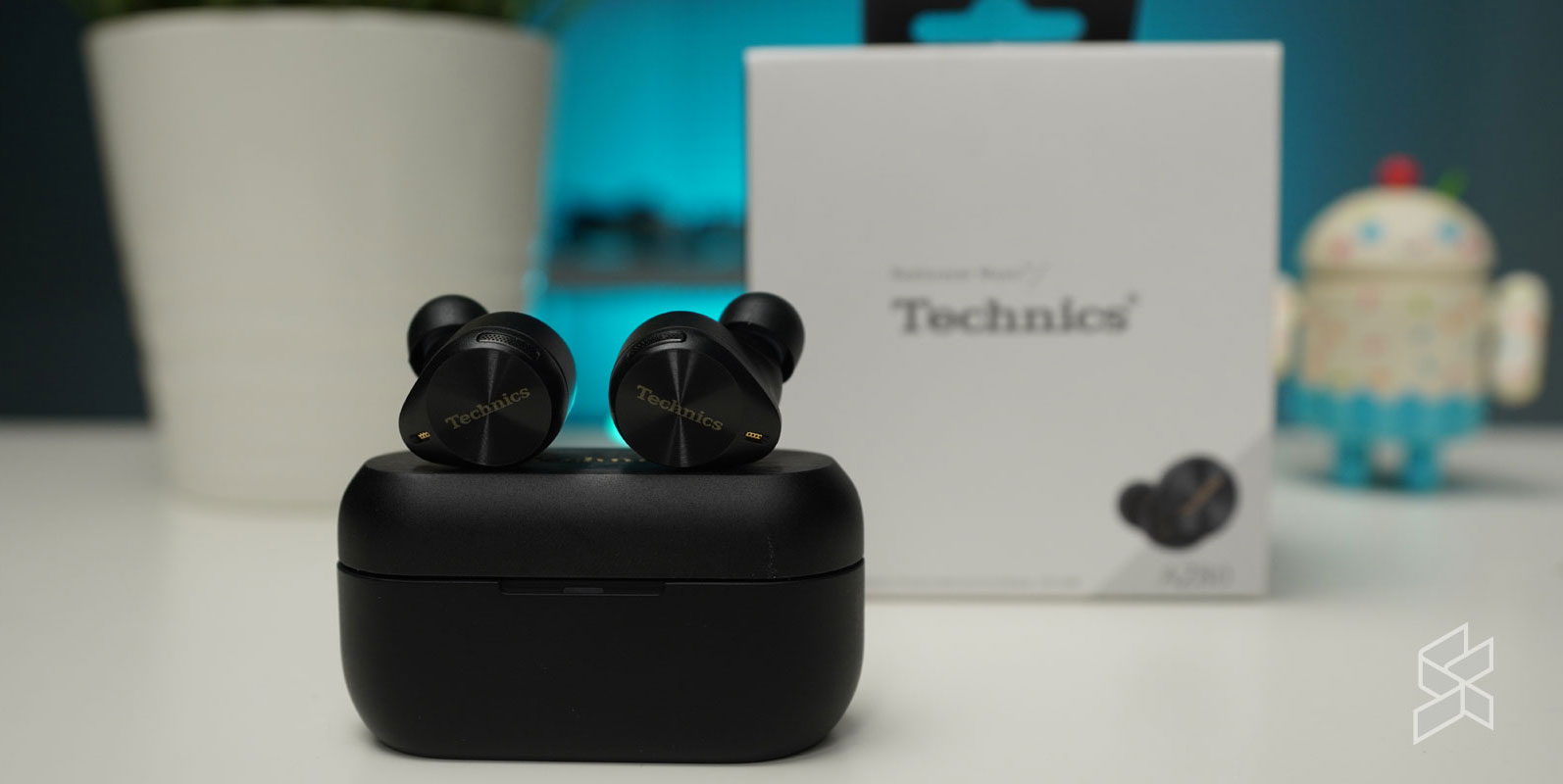Audio enjoyment is subjective. What works with one person may not work with another. Earbuds fitment, audio levels and even the app used to control the earphones can make of break the enjoyment of the device. That is why I went in with open eyes (and ears!) when I was given the Technics EAH-AZ80 to review by my editor. Can the Technics brand help to sway my view? Read on.
I have been using the AZ80 for just over a week, and my use scenario is not just to listen to music. I listen to podcasts, make calls, watch YouTube videos and even just as something to filter the office noise out when I need to focus on my work.
Looks expensive and fits well in the ears
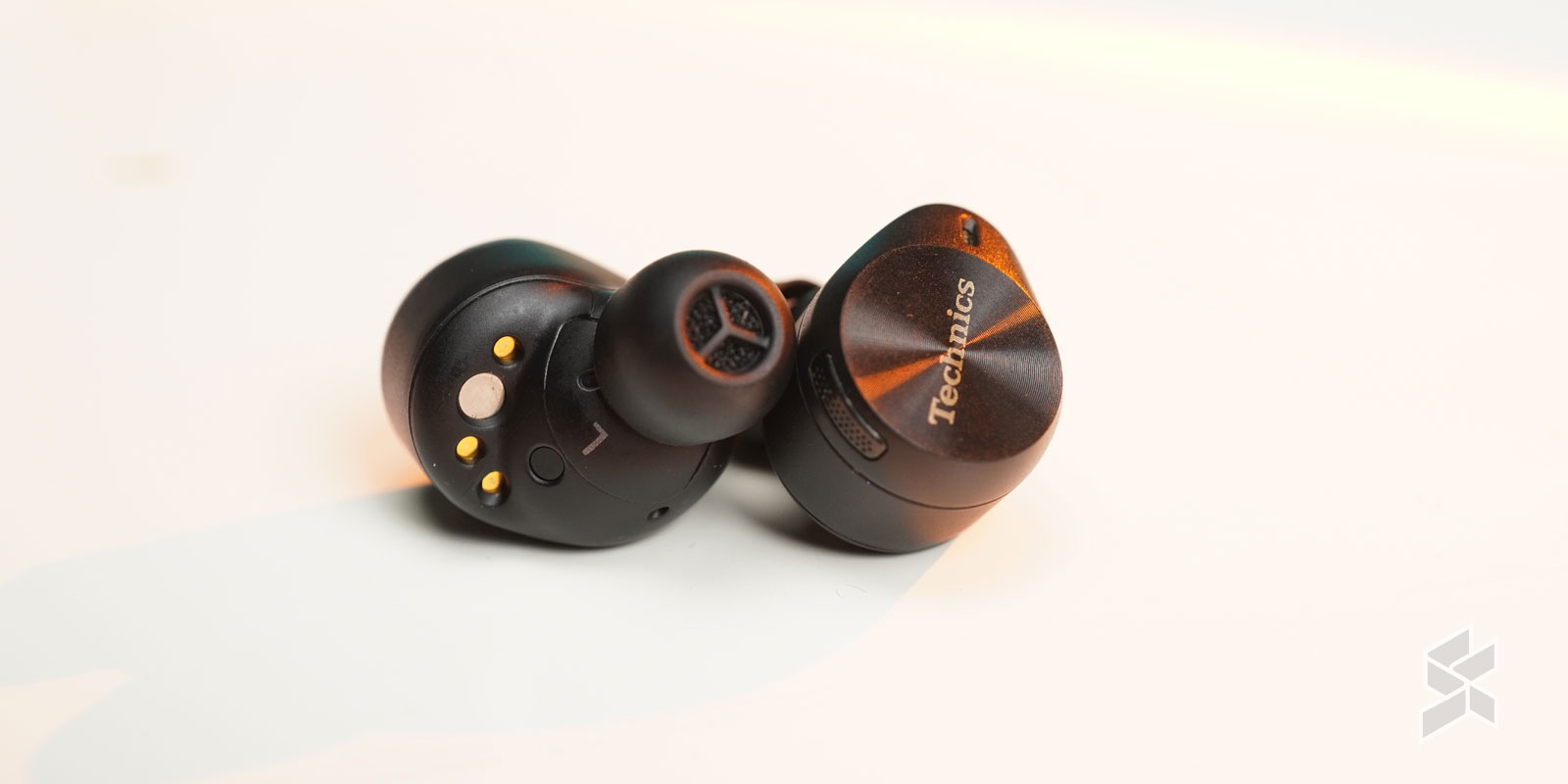
When I received the AZ80, I knew right away that the earphones were something special—the metal on the outside of the case gives it a premium feel. Even the hinge and closing action feel premium – there is a satisfying feel when I open the flap and a great “clack” sound when I snap it shut. That is premium right there.
The earphones themselves have a unique design—Technics says the design is made in such a way that it fits the concha groove perfectly. FYI, the concha is that seashell shape in the middle of your ears. The main body of the earbuds is where the 10mm free-edge aluminium alloy diaphragms live, and there is a nub extending where the ear tips are placed and plug into your ears.
On the bottom of the body are the pogo pads as well as the magnet to connect to its partner in the charging case. My only comment is that the magnet is pretty obvious—and I wished it was coloured the same as the body of the earbuds.
The case itself is a very typical-looking charging case, with the status LED located in the gap between the top flap and the body. There is a USB-C at the back to charge and unlike some other wireless earbuds, Technics included wireless charging with the AZ80 so you can charge the case using a Qi-compatible charging pad—or use reverse charging on supported smartphones.
Chock full of features
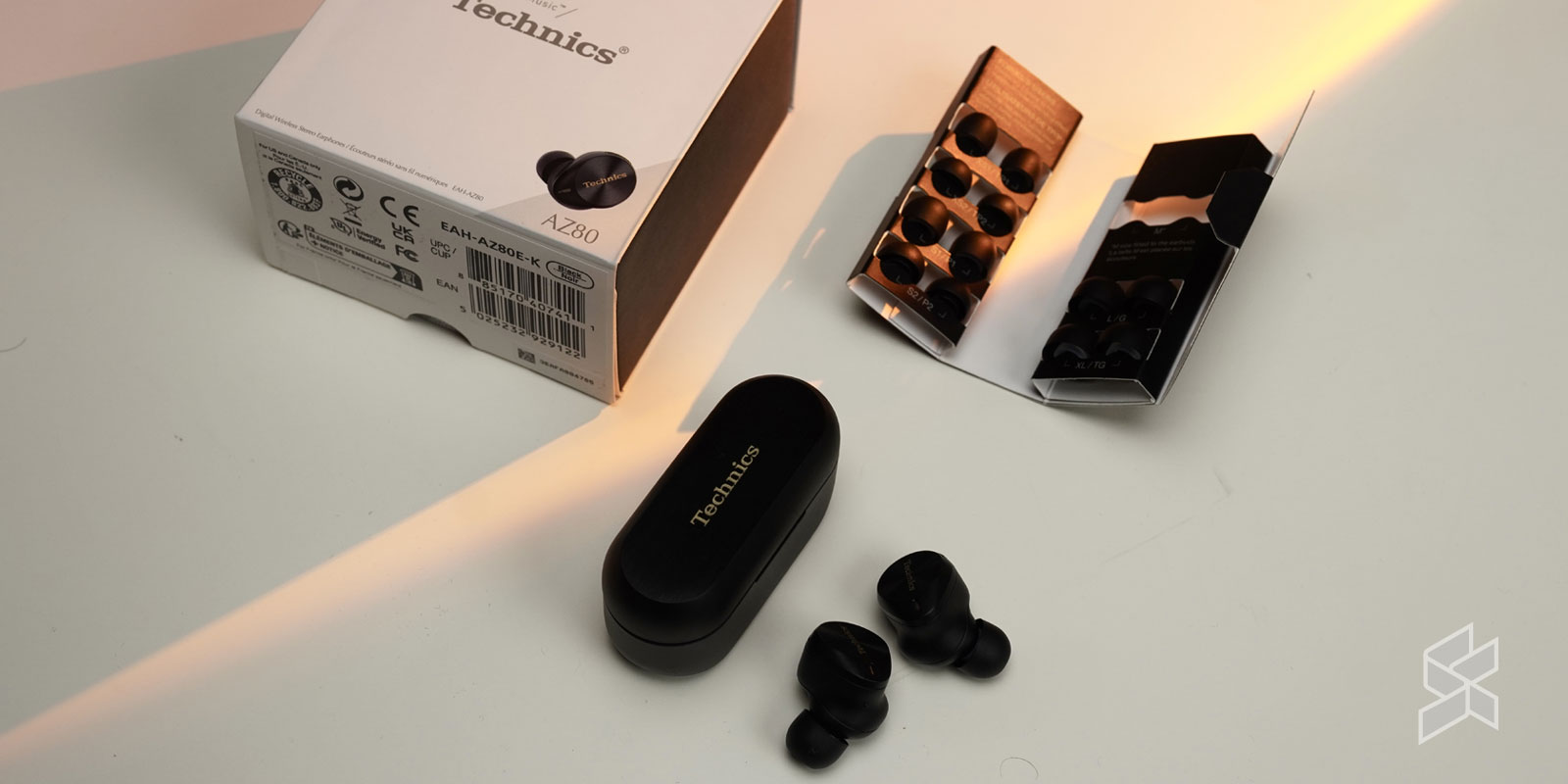
Technics claims that the AZ80 delivers “uninterrupted Hi-Fi sound performance” with the Dual-hybrid Active Noise-Cancelling feature. Another headline feature of the AZ80 is the JustMyVoice technology, where your calls will be adjusted to amplify your own speech while cutting down background noise using 8 built-in microphones.
I tried this with a couple of calls—one from a busy road, while the other call was in a shopping mall. In both instances, according to the other parties, I sounded clear and legible. It managed to filter out the environment noise to make me sound like I was in a quieter room instead of the sound chaos that was around me at that time.
By the way, if you have three devices—phone, tablet and PC—you can connect to all three devices at the same time, and switch audios between the devices with a simple tap. I can, for example, listen to Spotify on my phone, then switch watch a YouTube video on my tablet, and then join a Zoom call on my computer with little effort. You can’t listen to all three devices at the same time though.
All controls are done with touch, so the outside of the earbuds is a touch-sensitive control area. Both earbuds have it, and each side can have different controls—play/stop, audio volume, ANC on/off or even accept/reject calls. You do need to remember which side does what—I have several times meant to turn off ANC, but instead I stopped my music playback.
Audiophile-level sound quality
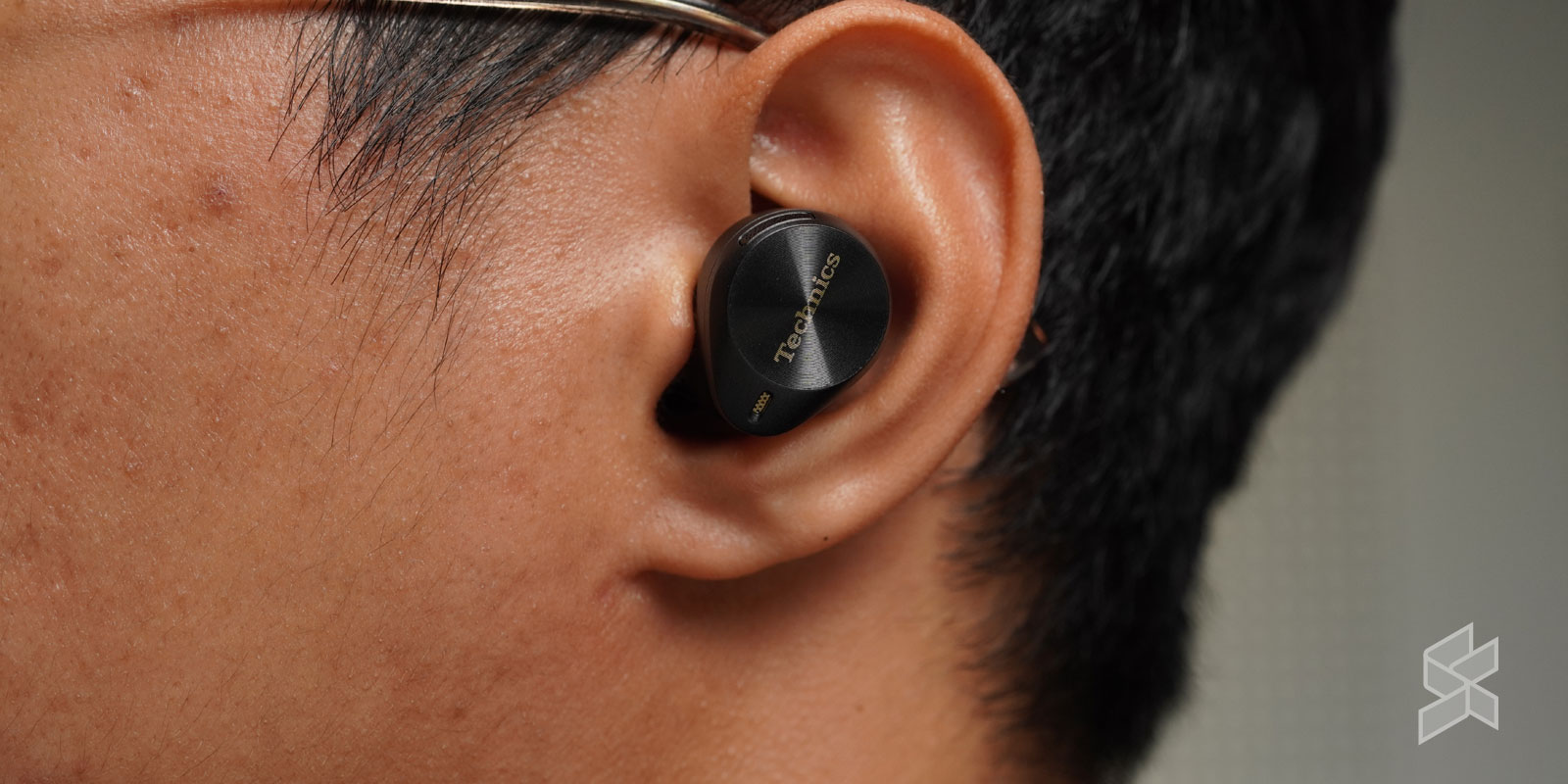
The AZ80 supports Hi-Res audio, and also supports both AAC and LCAC codecs. LDAC is the high-quality audio technology from Sony. Because of that, you get better audio quality—up to 3x versus AAC via Bluetooth. I certainly heard the difference between LDAC and AAC.
I got great audio while listening with the AZ80. I played Hoshimachi Suisei’s Stellar Stellar—both on Spotify and the Sony First Take channel—as well as Taylor Swift’s Style and Daft Punk’s Harder, Better, Faster, Stronger on both a Samsung Galaxy S23 Ultra and iPhone 15 Plus, and the songs shone through. The vocals sounded extra crisp while the midtones was not muddled, which is the case with many wireless earbuds out there. Even the bass sounded full and not an afterthought.
Mind you, I was on the default setting as the app (available for iOS and Android) offers some comprehensive tuning options via the EQ. There are also presets you can choose from the app itself.
The Active Noise Cancellation (ANC) of the AZ80 is pretty good, when combined with the passive noise cancelling with the earbuds themselves. While it will not drown out heavy machinery and sharp sounds, it did help to cut down a lot and leave you to your thoughts when you need the ANC on. You can turn on or off the ANC via a press-hold on the earbuds, or via the app.
One important metric for me is the comfort level of the earbuds. You do get different earbud sizes to fit your ear canal, and the tips I chose (M) was comfortable for me to wear the buds for hours at a time.
Battery life in line with Technics’ claims
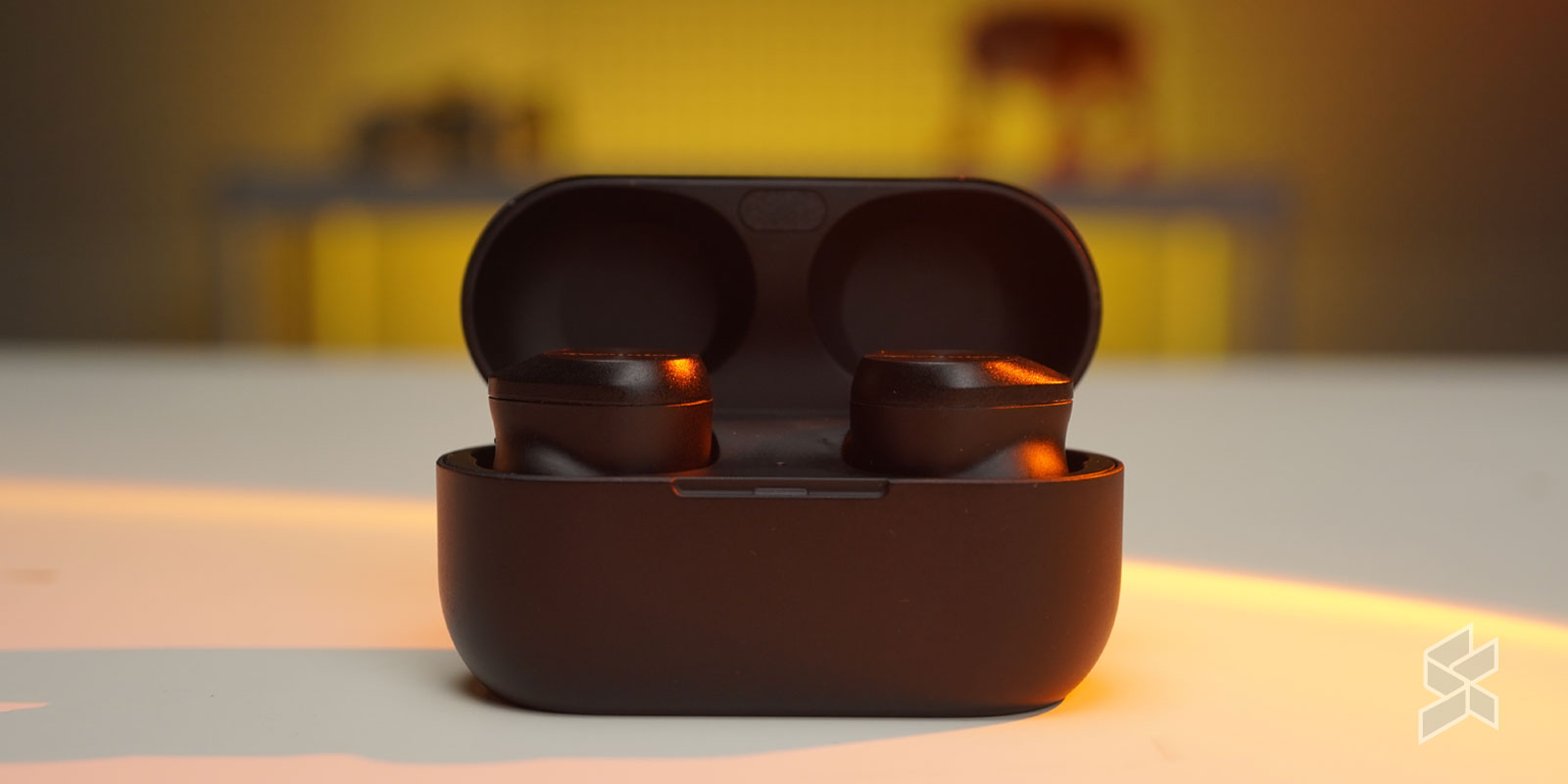
On paper, Technics says that the AZ80 can last for 7 hours with ANC on (with AAC). The charging case meanwhile can last the earbuds up to 24 hours with ANC.
My experience was that Technics wasn’t padding the time for the battery. I managed to get about 6 hours with the earbuds alone—just below the claimed time. But even then, 6 hours is pretty good for earbuds—that is enough for a trip to Taipei, with some spare battery life to last you while you wait for your luggage at the airport.
Plus, you get three times of full charge with the case, so you can go a true 24 hours with the case. When you need to charge the battery case, it takes only one hour and a half to fully charge the case. If you put in the earbuds in the case for 15 minutes, you will get about one hour of use time with ANC on. Turn ANC off to get a longer playtime.
Should you buy this?
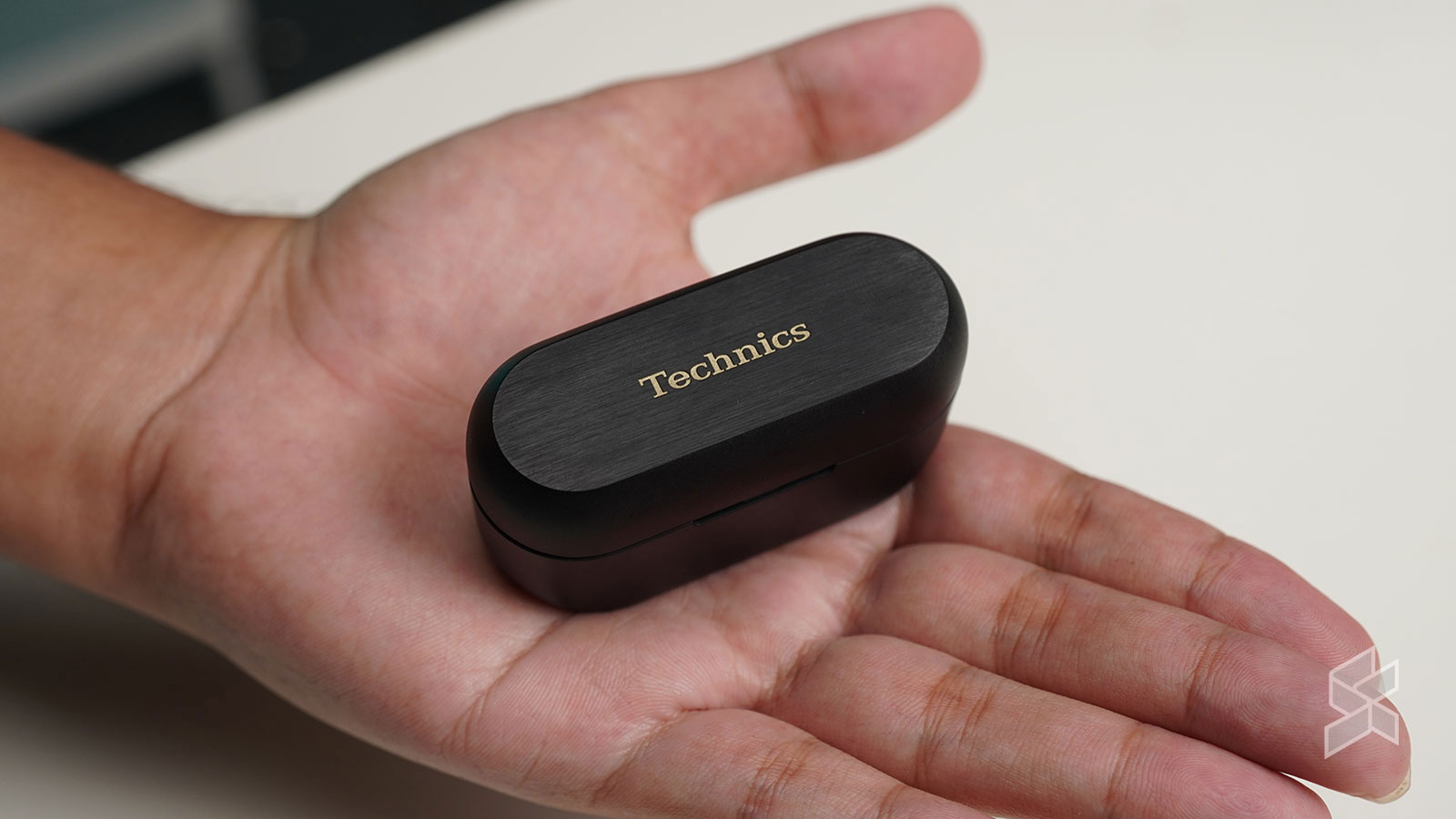
The premium price of RM 1,599 can be a tough pill to swallow for some, especially when you can get the Apple AirPods Pro for RM 1,099 or the Sony WF-1000XM5 for RM 1,399. Plus, you can get the latter two for cheaper if you catch deals on e-commerce sites.
If you want similar Technics audio quality but at a lower quality, there is the EAH-AZ60M2. The drivers are a bit smaller, but you still get the Signature Technics audio out of the box. Plus, the price is comparable to the Sony at RM 1,299.
However, the build and audio quality that the Technics AZ80 offer is a bar and a half above the AirPods Pro and XM5s. The Technics branding is not just for show, you truly get great audio quality with the AZ80. Can recommend.

